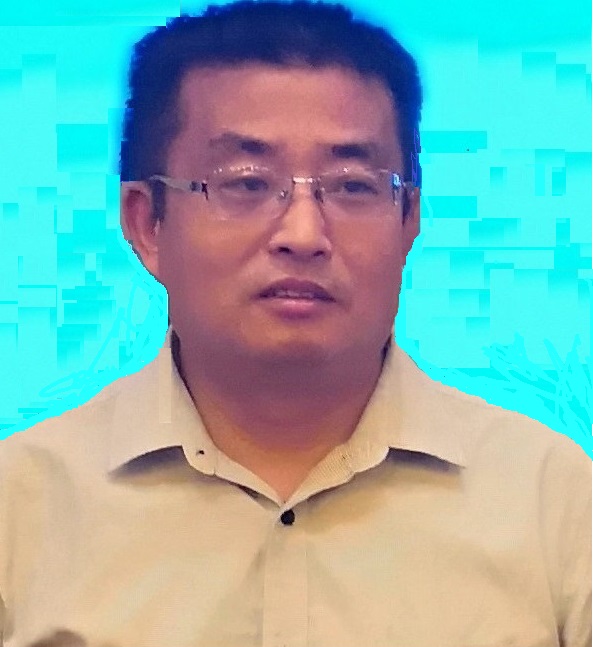Biography
Research field
Extensive experiment in Material science and Chemical-Engineering with emphasis on:
Research field include: Nanometer powder preparation, application. Main research filed series of NTC semicondutor nanometre powder, Polymer and nanometer powder composite. The nanometer scale theory on nanometer material.
Education:
PhD. Material Science and Engineering, Northwestern Polytechnical University, 2005.
M.S Chemical-Engineering, Northwestern University, 1997.
B.S Chemical-Engineering, Northwestern University, 1992.
Work experience:
2019-present as a professor in Dongguan Integration Innovation Institute.
2008-present, as an Associate-professor work at college of chemistry and chemical-engineering
Northwestern Polytechnical University.
1997-2000, as a Lecturer work at department of chemical-engineering,
Northwestern Polytechnical University.
1992-1994, as an assistant Engineer work at Xi’An Fine Chemical Factory.
EXPERIENCE
Journal of Nanomaterials & Molecular Nanotechnology, Eitorial Board Member.
International Journal of Nanoparticles & Nanotechnology Eitorial Board Member 2018.9
Material research society Member 2012-2014
Published Books:《Chemical Reaction Engineering》Press of northwestern polytechnical university. 2012,first edition.
Member of American MRS,ACS, Europe composite material society et al.
2012 MRS FALLING MEETING TT9 Chairman.
PUBLICATIONS
Representative of papers include:
Journal Publications:
Su.Lihong. et al. Hybrid Graphene Oxide and NTC Semiconductor Material Absorbs and Transform Light Energy via a Novel SurfaceNanoscale Plasmon Mechanical[J].Plasmonic. vol11, 2016.
Su.Lihong. et al. Piezochromic Phenomena of Nanometer Voids Formed by Mono-Dispersed Nanometer Powders Compacting Process[J]. PLoS One. 2013; 8(10): e72964.
Su.Lihong. et al. A New Expander Mechanism of an Infrared Laser Based on Different Nanometre Quantum Dot Particles[J]. J Nanomater Mol Nanotechnol. Vol6. 2017
Su.Lihong. et al. Development and Applications of Nano-Powder Patents ---- A Review in Patents[J]. Recent patent on nanotechnology, vol3, 2011
Su.lihong et al. The Mechanism Research on Agglomeration and dispersion of nanometer powder [e]. www.paper.edu.cn, 2007. August.
PATENTS AND APPLICATION
Applied 15 invent patents, As the First inventor. Represent patents:
1. CN201710088404.4, A new NTC semiconductor Nano-powder phosphor excitation spectra of modulation method.
2. CN201510328913.0, Hybrid Graphene with NTC semiconductor oxide solar energy-absorbing materials and preparation method
3. CN201710167622.7, Powder preparation of high-temperature thermal decomposition of the air impulse processing method and device.
REVIEWER FOR JOURNAL/TECHNICAL CONFERENCES
Reviewer of Journal of Material Research
Reviewer of Journal of applied polymer Science.
Reviewer of Journal of New Materials for Electro chemical Systems.
Reviewer of Journal of electro-ceramics.
Reviewer of ICCE-13,14,15,16,17. Chairman
Reviewer of Micro&nano letter
Reviewer of Europe Chemical-Engineering conference.
Research Interest
Dr. Lihong Su's research interests focus on:
Nanometer powder research
Function ceramics.
Energy material research
Li-ion battery
Polymer synthesis
Biography
1. What makes an article top quality?
Response: Originality.
2. Do you think that journals determine research trends?
Response: Yes.
3. What makes a good position paper?
Response: Science analysis method and experiment process.
4. What are the qualities you look for in an article?
Response: Experiment data and theory analysis.
5. Can you give us a broad indication of the types of themes a scientific journal should cover?
Response: Nanometer film material \mixture microstructure particle.
6. What sorts of research methods and frameworks do you expect people to use, and how will they balance conceptual and applied research?
Response: Equipment analysis data, correct principle.
7. How would you describe the journal’s mission and editorial objectives to our readers?
Response: Publish the new experiment phenomena and new assume mechanical of process.
8. Are there any particular areas which you would like to see, or expect to see, collaborate?
Response: Nanometer microstructure.
9. How can a publisher ensure the authors/readers a rigorous peer review and quality control?
Response: The familiar of field is key to this question.
10. What do you see as the merits of journals, as opposed to book series, as a means of scholarly communications?
Response: More faster publish new viewpoint and experiment.
11. How do you differentiate Journal of Nanomaterials & Molecular Nanotechnology with other journals in the field?
Response: Nanometer microstructure articles should be publish more in future.
